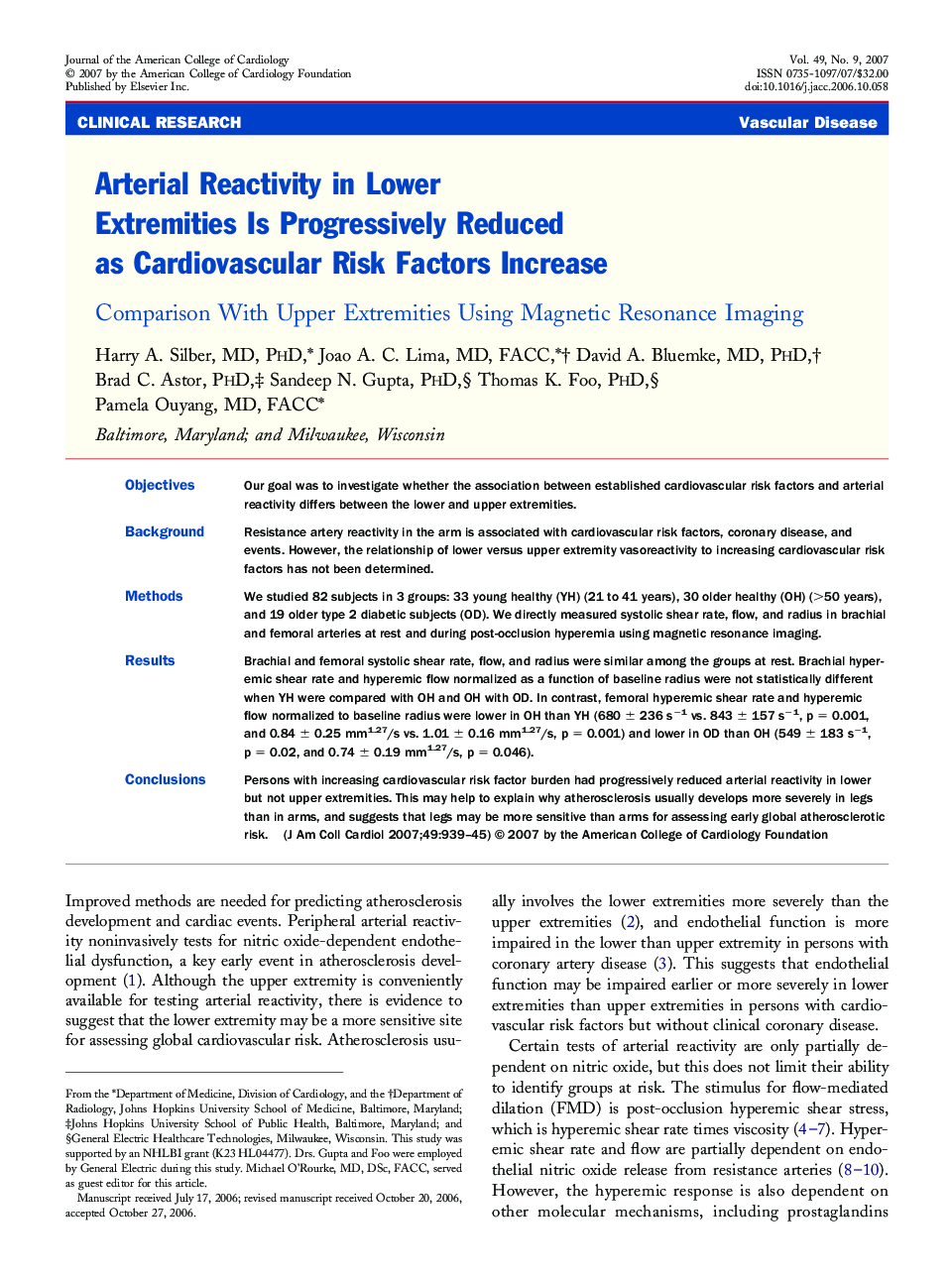| کد مقاله | کد نشریه | سال انتشار | مقاله انگلیسی | نسخه تمام متن |
|---|---|---|---|---|
| 2954567 | 1577485 | 2007 | 7 صفحه PDF | دانلود رایگان |

ObjectivesOur goal was to investigate whether the association between established cardiovascular risk factors and arterial reactivity differs between the lower and upper extremities.BackgroundResistance artery reactivity in the arm is associated with cardiovascular risk factors, coronary disease, and events. However, the relationship of lower versus upper extremity vasoreactivity to increasing cardiovascular risk factors has not been determined.MethodsWe studied 82 subjects in 3 groups: 33 young healthy (YH) (21 to 41 years), 30 older healthy (OH) (>50 years), and 19 older type 2 diabetic subjects (OD). We directly measured systolic shear rate, flow, and radius in brachial and femoral arteries at rest and during post-occlusion hyperemia using magnetic resonance imaging.ResultsBrachial and femoral systolic shear rate, flow, and radius were similar among the groups at rest. Brachial hyperemic shear rate and hyperemic flow normalized as a function of baseline radius were not statistically different when YH were compared with OH and OH with OD. In contrast, femoral hyperemic shear rate and hyperemic flow normalized to baseline radius were lower in OH than YH (680 ± 236 s−1 vs. 843 ± 157 s−1, p = 0.001, and 0.84 ± 0.25 mm1.27/s vs. 1.01 ± 0.16 mm1.27/s, p = 0.001) and lower in OD than OH (549 ± 183 s−1, p = 0.02, and 0.74 ± 0.19 mm1.27/s, p = 0.046).ConclusionsPersons with increasing cardiovascular risk factor burden had progressively reduced arterial reactivity in lower but not upper extremities. This may help to explain why atherosclerosis usually develops more severely in legs than in arms, and suggests that legs may be more sensitive than arms for assessing early global atherosclerotic risk.
Journal: Journal of the American College of Cardiology - Volume 49, Issue 9, 6 March 2007, Pages 939–945